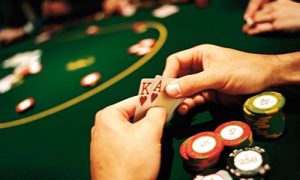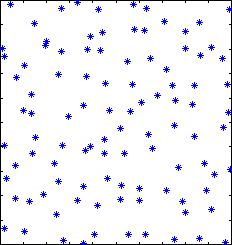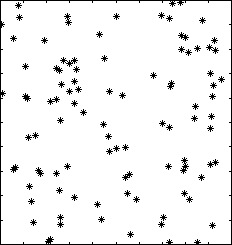 How do you think, are you very predictable? According to most scientific articles, you are more predictable than you think. We all are. For example, imagine you invited a group of friends and asked them to simulate a coin toss. You didn't give them any coins, just asked them to imagine they are tossing a real coin 20 times and write down the results. What do you think they will do?
How do you think, are you very predictable? According to most scientific articles, you are more predictable than you think. We all are. For example, imagine you invited a group of friends and asked them to simulate a coin toss. You didn't give them any coins, just asked them to imagine they are tossing a real coin 20 times and write down the results. What do you think they will do?
Usually, the result is close to ten heads and ten tails in one series of tosses. People almost never have a result with 7 heads and 13 tails, or 6 heads and 14 tails. This is the first problem. If we were to plot a graph for coin tosses, the Gaussian curve (Bell curve) would be unnaturally narrow. There would be nothing at the edges, whereas, when tossing a real coin, there should be many unexpected events.
The second problem is that the written sequence of flips is too short. If H is heads and T is tails, the sequence would be like this:
HHHTTHTTTHHTHHHTTHTH
Observe the sequence. The longest group is three letters. It might seem that everything is fine and that everything is truly random, but in reality, this sequence shows that the probability of a certain pattern ending after three consecutive letters is 100%, whereas this probability should be 50%. Here is what a truly random sequence looks like:
HTHTHHHTHTTTHHHHTHTH
As we can see, this particular line has 7 heads and 13 tails, and there is one group consisting of 5 letters. Of course, this sequence is very far from the median, but the point is that people would never come up with such a sequence.
Another good example of this phenomenon would be the composition of points in space. If I asked you to imagine a random grid of 100 points, it would probably look like this:
And this is not a random grid at all. Truly randomly arranged points would look like this:
You probably notice the difference. The points in the randomly created grid clumped into various groups and clusters. It doesn't look as spacious and orderly as the artificially created one.
What can we infer from all this? People have a very limited and narrow understanding of what randomness is. In their understanding, it has to be organized and orderly.
Fabricated randomness is organized and even. True randomness can be clumped and disorderly, which doesn't look as nice. This is the basis of game flow. Ultimately, all we do in game flow is trying to imitate randomness.
Let's review the sequence:
F.F.F.V.F.B.V.F.F.F.F.B.F.F.F.V.F
This time we highlighted bluffs and folds. I remind you that we don't choose when to make a value bet, we just do it when we have a good hand. From this, it follows that the highlighted game is the game we can control. Through the model of folds and bluffs, we try to imitate randomness in 4-bet play.
So, how exactly do we want to imitate randomness? From a metagame perspective, we have two choices at any given moment. The first is random and sincere, the second is non-random and intentional. Non-random and intentional means that the opponent senses when you choose to attack.
Both of these choices can be beneficial, depending on the situation. In 4-bet play, if you bluff with a 4-bet but appear sincere and random enough, the opponent will believe you and the bluff will be successful. Conversely, if you 4-bet for value and it looks like you are doing everything with intention, there might be some action at the table. Players usually know this intuitively because when you get high pocket pairs three times in a row, it certainly doesn't look like randomness.
Unfortunately, getting good cards is not within your control. You can't arrange your game flow model to distribute good hands in such an order and use them only when the opponent doesn't believe you.
The only truly random event in 4-bet play is getting value hands. Everything else is imitated randomness. And the main goal of such simulations is to make the opponent think you are making a value bet when you are actually bluffing.







